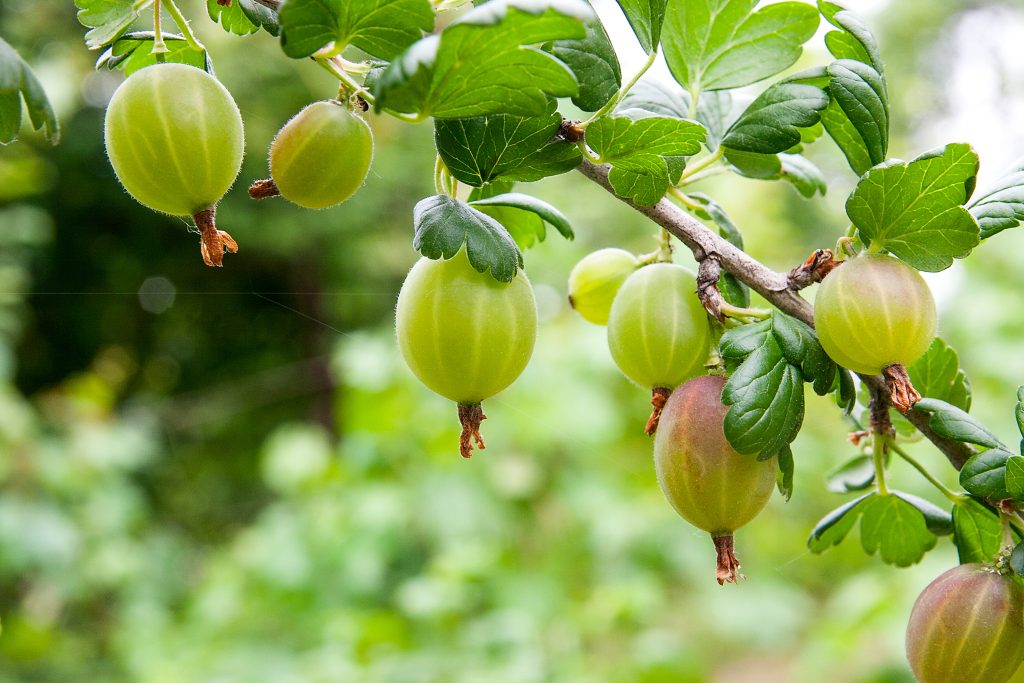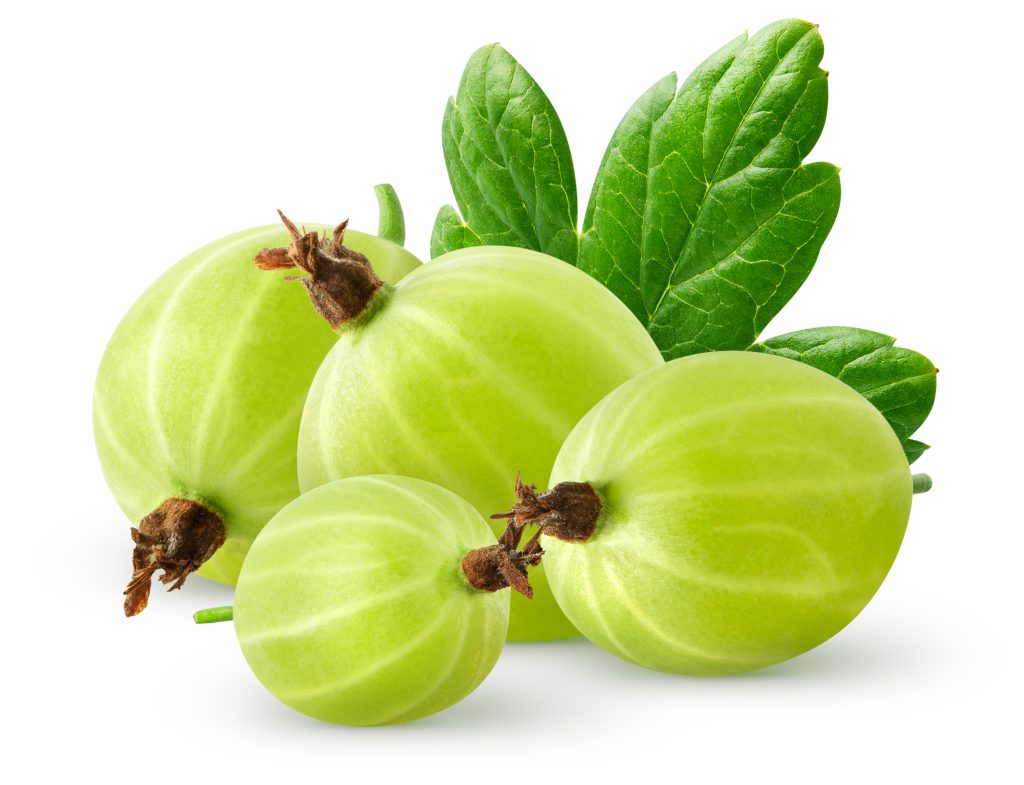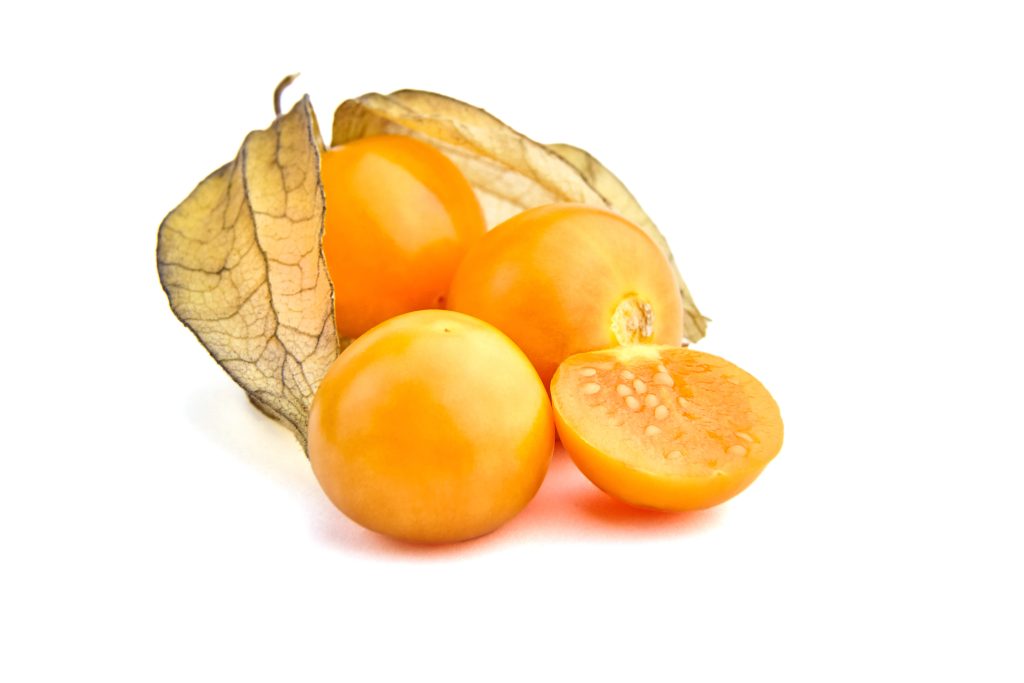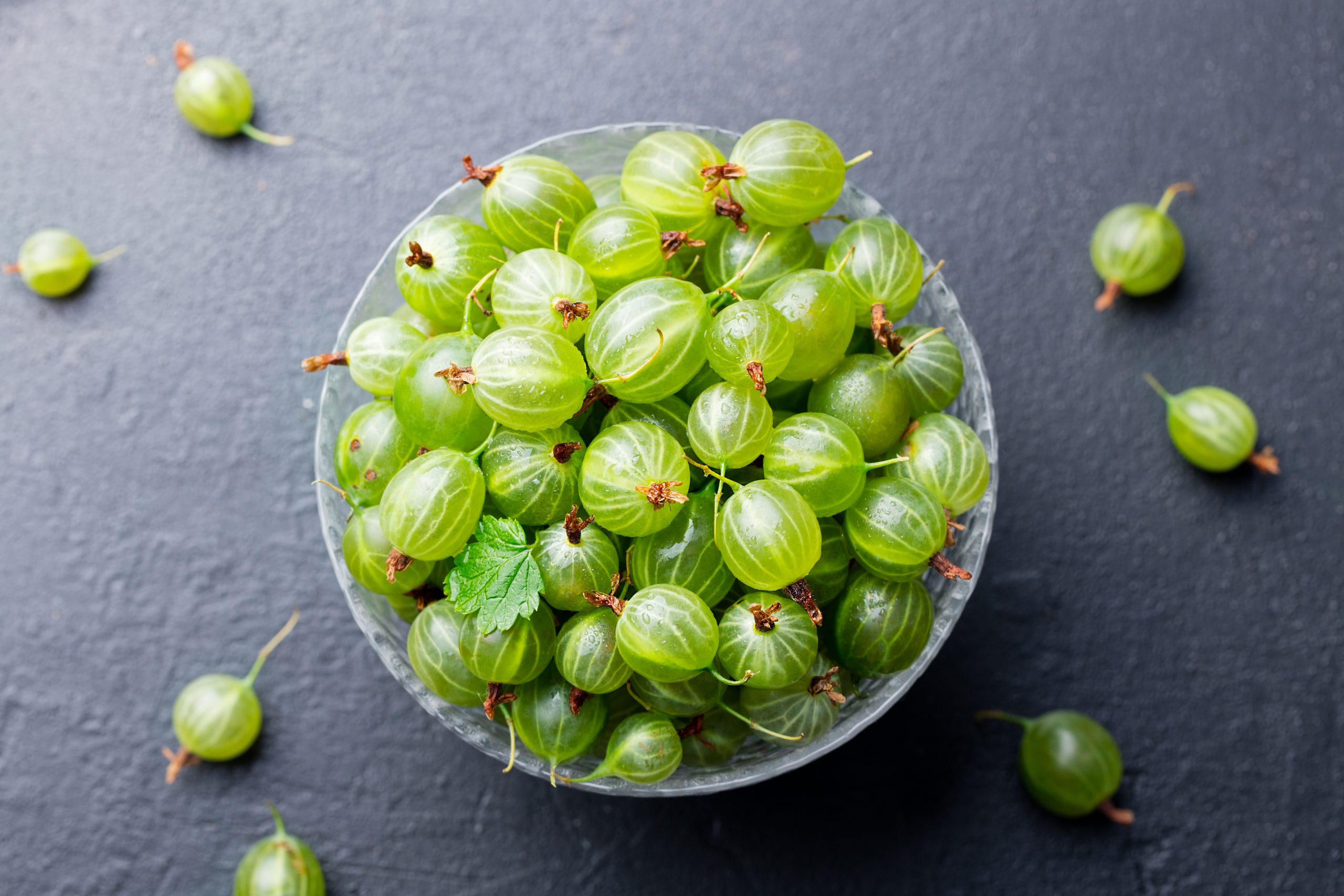Gooseberries are small, sour fruits that grow on bushes. They come in several colors, including green, red, purple, and yellow, and are popularly used in pies, jams, jellies, and flavoring beverages.
Table of Contents
What is a Gooseberry?
A gooseberry is a small, round, sour fruit from the genus Ribes. It is also called currant berry or grossularia and comes in various hues, including green, yellow, purple, and red. Gooseberries are indigenous to Europe, Asia, and North Africa but are widely grown worldwide, including in America.
These fruits are distinguished by their translucent, papery skin, which has vertical stripes and is coated with tiny, fine hairs. They have a distinctive flavor that is tart and a little bit sweet. They can be consumed raw or used in baking and cooking to give sweet dishes a sour taste.
The History of Gooseberries
European gooseberries (Ribes uva-crispa) are indigenous to North Africa, Asia, and Europe. Records of the fruit’s cultivation date back to the 13th century in Europe, where it has been grown and developed for generations.
Early European settlers brought the fruit to North America, and today they are grown worldwide, including New Zealand and Australia. The American gooseberry (Ribes hirtellum) is the most common North American species, which produces small fruits but is resistant to mildew.
Many nations, including Chile, China, and India, are big producers and exporters of these berries, considerably impacting global trade. Due to their numerous health benefits, such as high vitamin C content and antioxidant characteristics, these berries have increased in popularity.
Gooseberries have cultural significance around the world in addition to their culinary usage. The largest and best-formed gooseberry received a prize in the 19th-century gooseberry festivals conducted in England.
Gooseberry wine is a traditional libation enjoyed during the summer solstice celebrations in Finland. They are also regarded as sacred fruits used to heal various illnesses in Indian Ayurvedic medicine.

What Does a Gooseberry Taste Like?
Gooseberry’s taste depends on their color (ripeness) but generally tastes like grapes with some acidity. Green gooseberries are sour, and purple or red gooseberries are sweet.
How to Tell When Gooseberries Are Ripe
Follow these tips to determine when a gooseberry is ripe.
| Texture | Ripe berries are juicy and slightly tangy, with a firm, somewhat fuzzy exterior and a little translucent interior. |
| Firmness | The firmness of a ripe berry is defined as plump and somewhat yielding to the touch but excessively soft or mushy. |
| Roughness/ Smoothness | Ripe berries are typically smooth and slightly rough due to the tiny seeds inside. |
When buying berries, look for solid, plump berries with a waxy surface. Gently squeeze them to test for firmness and maturity. Steer clear of berries that are wilted, rotten, or squishy. Pick berries with a uniform color; avoid berries with dark spots or other blemishes.
Are Gooseberries and Golden Berries Related?


No, golden berries and gooseberries are not related. Golden berries are smaller and have a sweet-tart flavor, while gooseberries usually are larger and have a tart taste. Gooseberries are used in sweets and preserves, while golden berries are consumed fresh or added to salads or smoothies.
Are Gooseberries Legal in the US?
Gooseberries are legal in many US states, although they’re still outlawed in some northern states. In the early 1900s, gooseberries were banned in the US because of their link to the disease known as white pine blister rust, which threatened the country’s timber sector.
After new rust-resistant gooseberry cultivars were created, the restriction was moved to individual state jurisdiction in 1966.
Cooking with Gooseberries
It’s crucial to prepare gooseberries properly before incorporating them into a recipe.
- Begin by removing the fruit’s stalks and giving it a good wash.
- The fruit may need to be seeded and cut in half for some recipes, but it may also be left whole.
These berries can be prepared in several ways, such as baking, stewing, and canning. When stewed, it can be eaten as a dessert or a topping for ice cream or pancakes.
Gooseberries can easily be made into a stew by simmering them in a saucepan with sugar, water, and other ingredients until the fruit softens and the mixture thickens.

Here are three dishes that demonstrate how versatile these fruits are in the kitchen:
Gooseberry Fool: This classic British dessert is made with stewed gooseberries and whipped cream. It’s a simple yet delicious dessert that’s perfect for summer.
Amla Chutney: This Indian-style chutney is made with fresh gooseberries, ginger, and spices. It’s a tangy and spicy condiment perfect for serving with grilled meats or as a dipping sauce for samosas.
Rødgrød med Fløde: This Scandinavian dessert is made with a mixture of berries, including gooseberries, thickened with cornstarch. It’s typically served with cream on top.
How to Store Gooseberries
Gooseberries can be left on the counter for four days in a cool and dry place. When refrigerated, they can last for two weeks.
Frozen berries can last 12 months when stored correctly in an airtight container. Drying them is the best storage technique because they can last 6-12 months if stored in a cool and dry place.
Nutritional Benefits of Gooseberries
Gooseberry fruit is rich in fiber, vitamin C, and antioxidants. These vitamins and minerals can promote a robust immune system, improve digestion, and lessen inflammation.
For instance, vitamin C is necessary for synthesizing collagen, which is required for firm, healthy skin, nails, and hair. Antioxidants guard against cellular deterioration and can lower the risk of chronic illnesses like cancer and heart disease.
Fiber is advantageous for managing weight since it gives a feeling of fullness and also helps control blood sugar levels.
Where to Purchase Gooseberries
During their peak season, from late spring to early summer, you can purchase gooseberries from specialized shops, farmers’ markets, and occasionally at bigger grocery stores.
Their availability may vary depending on your location and local growing conditions. You can also order online from specialized fruit merchants.

